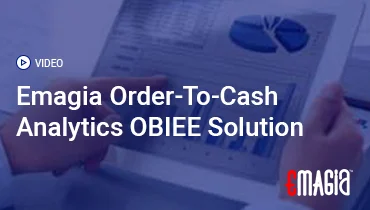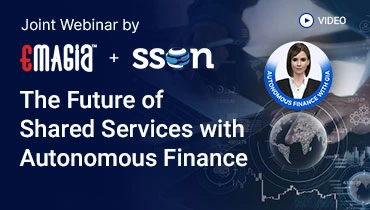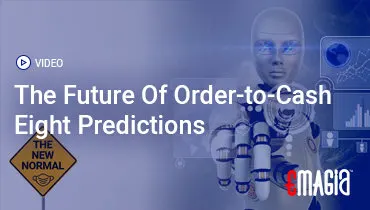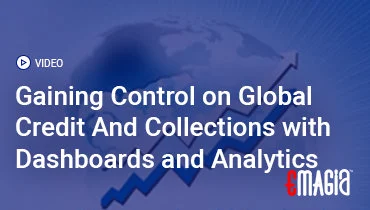The Painful Problem with Manual Invoice Data
Every business, regardless of its size, deals with invoices. From paying suppliers to billing clients, the sheer volume of these documents can be staggering. For many years, the standard business procedure for managing these documents has involved a tedious and slow manual process. This includes everything from opening mail and emails to physically typing information into a system. This data entry of invoices is not just mundane; it’s a significant drain on resources and a source of countless headaches.
When you have to manually handle hundreds or even thousands of invoices a month, the process is incredibly time-consuming and prone to human error. A simple typo can lead to delayed payments, damaged vendor relationships, and major financial discrepancies. This is the painful reality that many businesses face, and it’s a problem that desperately needs a modern solution. The good news is, that solution already exists.
What is Automated Invoice Data Extraction?
At its core, invoice data extraction is the process of pulling key information from an invoice document and converting it into a structured, usable format. This data can include everything from the invoice number and date to vendor details, line items, and total amounts due. Traditionally, this was all done by hand. Automated invoice extraction leverages cutting-edge technology to perform this task in seconds, without any manual input.
This automated approach transforms unstructured information—like a PDF or a scanned image—into organized, digital data. The goal is to move beyond the limitations of manual data entry and unlock a new level of efficiency and accuracy. By automating the process, businesses can finally say goodbye to the slow, error-prone world of manual invoice handling.
Breaking Down the Invoice Data Extraction Process
Automated data extraction from invoices is not a single action but a multi-step process. Understanding these steps can help you appreciate the complexity and power of modern solutions. The typical workflow includes:
- Document Capture: The system first ingests the invoice from various sources, such as emails, scanners, or direct uploads.
- Preprocessing: The captured document is prepared for analysis. This step can involve straightening skewed images, improving contrast, and removing background noise to ensure high-quality recognition.
- Data Recognition: This is where the magic happens. The technology reads the document to identify text and figures.
- Data Extraction: The system then pulls specific data points based on pre-trained models. This is where key-value pairs, like “Invoice Number: 12345,” are identified.
- Validation and Verification: The extracted data is cross-referenced with internal databases or purchase orders to ensure accuracy. Any discrepancies are flagged for human review.
- Export and Integration: The final, validated extracted payment and other details are exported to an accounting system or ERP.
The Technology Behind Smart Invoice Extraction
The ability to instantly extract invoices in seconds relies on a powerful combination of technologies working together. It’s a leap forward from simple, rule-based systems that struggled with minor variations in document layouts. Today’s solutions are intelligent and self-learning.
AI and Its Role in Invoice Data Extraction
The heart of modern solutions lies in ai invoice extraction. Unlike older methods that relied on templates, AI-powered systems use machine learning and deep learning to understand the context and layout of an invoice. This means they can process a new supplier’s invoice without any prior setup or training. The system learns with every document it processes, continuously improving its accuracy over time.
Machine learning models are trained on vast datasets of invoices from around the world. This allows them to identify key fields, regardless of their location on the page or the specific invoice design. This is especially critical for extracting structured data from invoices that are semi-structured or completely unstructured. AI also plays a crucial role in validating data, flagging potential fraud, and even predicting a document’s classification.
Optical Character Recognition (OCR)
OCR technology is the foundation of any document data extraction solution. It’s the tool that converts an image of text into machine-readable text. While OCR on its own can be inaccurate with complex or low-quality documents, modern OCR is supercharged by AI. The combination of OCR and AI enables systems to achieve incredible accuracy rates, often above 95%, for invoice data extraction and receipt data extraction alike.
Unlocking Unprecedented Benefits with Automated Extraction
The shift to automated invoice data extraction software isn’t just about saving time; it’s about fundamentally transforming your financial operations. The benefits are far-reaching and impact every aspect of a business’s accounts payable workflow. These are the advantages of embracing automation and making manual data entry a thing of the past.
Significant Time and Cost Savings
Automated invoice extraction slashes the time it takes to process a single document from minutes or even hours down to just a few seconds. This reduction in labor means your accounts payable team can process a much higher volume of invoices without needing to grow the team. The saved time translates directly into reduced operational costs and allows your team to focus on more strategic, high-value tasks.
Superior Accuracy and Reduced Errors
Manual data entry is inherently prone to human error. A misplaced decimal point or a misspelled vendor name can cause significant financial issues. Automated invoice data extraction software minimizes these risks. With high-accuracy AI and OCR, the data is captured precisely the first time. This ensures the integrity of your financial records and prevents costly mistakes like duplicate payments or incorrect payment amounts.
Enhanced Visibility and Control
With an automated system, all your invoice data is centralized and digitized. This provides a clear, real-time view of your accounts payable process. You can easily track the status of any invoice, monitor cash flow, and generate detailed reports in seconds. This improved visibility helps in making smarter financial decisions and ensures that every invoice procedure is followed correctly.
Improved Vendor Relationships
Timely and accurate payments are the foundation of strong vendor relationships. When you can process invoices quickly and without errors, you can ensure that your suppliers are paid on time. This fosters trust and can even lead to better terms and discounts in the long run. An efficient system for data extraction from invoices is a sign of a professional and well-managed business.
Choosing the Right Invoice Data Extraction Software
The market is flooded with solutions, and selecting the right invoice data extraction software can seem daunting. To make an informed decision, it’s essential to look for specific features that will meet your business’s unique needs. Not all software is created equal, and the best choice depends on factors like your business size, invoice volume, and existing technology stack.
Key Features to Look For
- Intelligent OCR: The software should be able to handle a wide variety of invoice formats, including scanned images, PDFs, and even photos from a mobile device.
- AI and Machine Learning: A template-free solution that learns over time is a must. This ensures that new and unseen invoice layouts can be processed automatically.
- Line-Item Extraction: For detailed financial analysis, you need a tool that can accurately perform invoice line extraction. This goes beyond the header information and captures the specifics of each product or service.
- Seamless Integration: The solution should easily integrate with your existing ERP, accounting software, and document management systems.
- Scalability: The software should be able to handle a growing volume of invoices without a drop in performance.
- Data Validation: Look for built-in validation rules and the ability to match invoices with purchase orders.
The Difference Between OCR and AI Solutions
While basic OCR technology has been around for years, the true game-changer is the integration of AI. Traditional OCR often relies on templates and rules. If an invoice format changes even slightly, the system can fail. The latest generation of ai invoice extraction systems is far more flexible. They don’t need a template; they “see” the document and understand what each piece of invoice data represents. This self-learning capability is what makes them so powerful and reliable.
A Step-by-Step Guide to the Automated Process
Thinking about implementing an automated solution? Here’s a detailed look at how the entire workflow happens from start to finish. This process overview will give you a clear picture of how to read an invoice in a digital world and how to seamlessly manage the flow of invoice data from receipt to payment.
Step 1: Ingesting the Document
The process begins the moment a new invoice is received. The system automatically monitors various input channels, whether it’s a dedicated email address for accounts payable, a folder on your network, or a physical scanner. The goal is to capture the invoice as soon as possible to kick off the automation process.
Step 2: Intelligent Data Extraction from Invoices
Once captured, the document is sent to the AI-powered engine. The system performs a series of actions simultaneously:
- It reads the invoice using advanced OCR.
- It uses machine learning to identify the type of document (an invoice vs. a receipt).
- It extracts all the critical data fields, including vendor name, total amount, dates, and invoice line extraction.
- It parses this unstructured information and puts it into a structured format like a CSV or JSON file.
Step 3: Validation and Human-in-the-Loop Review
After the automated extraction, the system performs a series of validation checks. It confirms that the total amount matches the sum of the line items, and it may even cross-reference the extracted data with a purchase order in your system. If the confidence score is high, the invoice is sent directly to the next stage. If there are any discrepancies or an unsure extraction, the document is flagged for a quick manual review. This “human-in-the-loop” approach ensures 100% accuracy without slowing down the process.
Step 4: Integration and Workflow Automation
The final, verified invoice data is now ready to be pushed to its final destination. This is where the automation pays off in spades. The data is automatically uploaded to your accounting software or ERP system, populating the necessary fields and eliminating the need for any manual data entry. The system can also trigger an approval workflow, routing the invoice to the appropriate person for final authorization before payment is released.
How Emagia Helps You Achieve Touchless Invoice Processing
Emagia is a leading provider of AI-powered financial automation solutions designed to help businesses manage their accounts receivable and accounts payable with unprecedented speed and accuracy. By focusing on intelligent document processing, Emagia’s platform enables companies to achieve truly touchless invoice processing, reducing manual effort and transforming the entire financial workflow. Unlike generic data extraction tools, Emagia’s solution is built specifically for the complexities of financial documents, understanding not just the text but the context of an invoice.
Its advanced machine learning models are trained to handle a wide array of formats, languages, and layouts, ensuring high accuracy from the very first document. With Emagia, you can not only extract invoices in seconds but also automate the entire payment cycle, from receipt and reconciliation to payment and reporting. This holistic approach provides a comprehensive solution that goes far beyond simple data capture, delivering a significant return on investment through improved efficiency, reduced errors, and better cash flow management.
Frequently Asked Questions About Invoice Data Extraction
Here are some of the most common questions people have about automating invoice data extraction, based on popular search queries and AI overviews.
What is the most effective way to extract data from invoices?
The most effective method is using an AI-powered invoice data extraction software. This technology leverages machine learning and intelligent OCR to automatically identify and pull data from various invoice formats without needing predefined templates, ensuring high accuracy and efficiency.
How do I extract unstructured data from invoices?
Extracting structured data from invoices is best done using intelligent document processing (IDP) software. These tools use a combination of AI, machine learning, and natural language processing to understand the context of the data and convert it from an unstructured format (like a PDF) into a structured format that can be used in databases.
What is an extracted payment?
An extracted payment refers to the process of identifying and pulling payment-related information from an invoice, such as the total amount due, payment terms, and due date. This data is then used to initiate a payment in an automated accounts payable system.
Is there a free tool for invoice extraction?
While some providers offer free trials or a limited number of free pages for invoice extraction, most professional-grade solutions that provide high accuracy and scalability come with a cost. The investment is typically justified by the significant time and cost savings it provides.
How can I learn how to read an invoice in a digital format?
The easiest way to read an invoice digitally is with automated software that presents the extracted data in a clean, organized interface. While the system does the heavy lifting, understanding the key fields like the vendor name, invoice number, and total amount is all you need to know to verify the information.
What is the difference between OCR and AI for invoice data extraction?
OCR converts an image of text into machine-readable text. AI, on the other hand, understands the meaning and context of that text. So, while OCR can read a number, AI understands that the number next to a specific label is the invoice total, not just a random string of digits. The most effective systems use both technologies together.
Why is data entry of invoices still a common practice?
Many businesses still rely on manual data entry of invoices due to a lack of awareness of modern solutions or a hesitation to invest in new technology. However, as the benefits of automation become more widely known, this practice is rapidly declining in favor of more efficient, automated methods.



